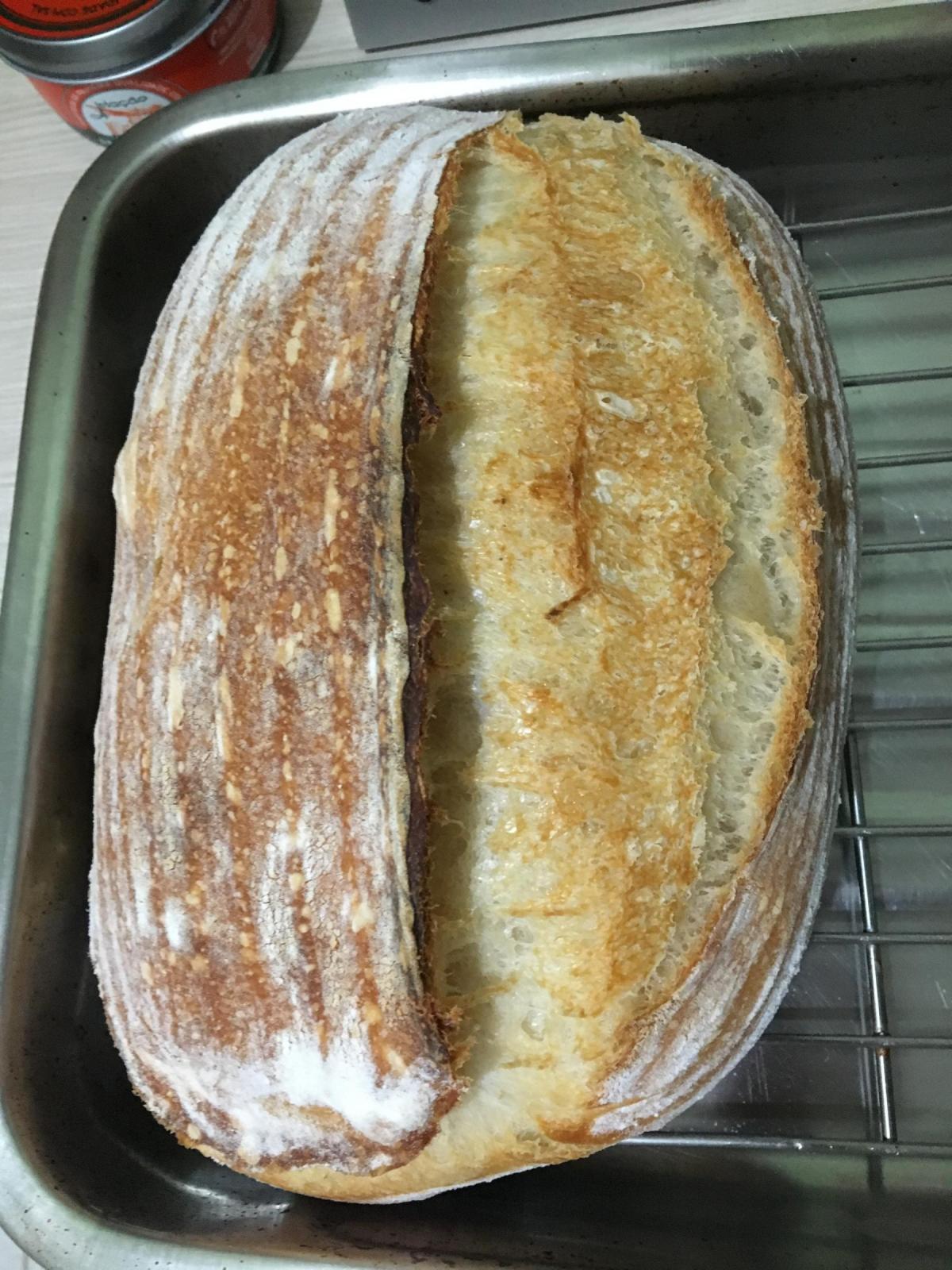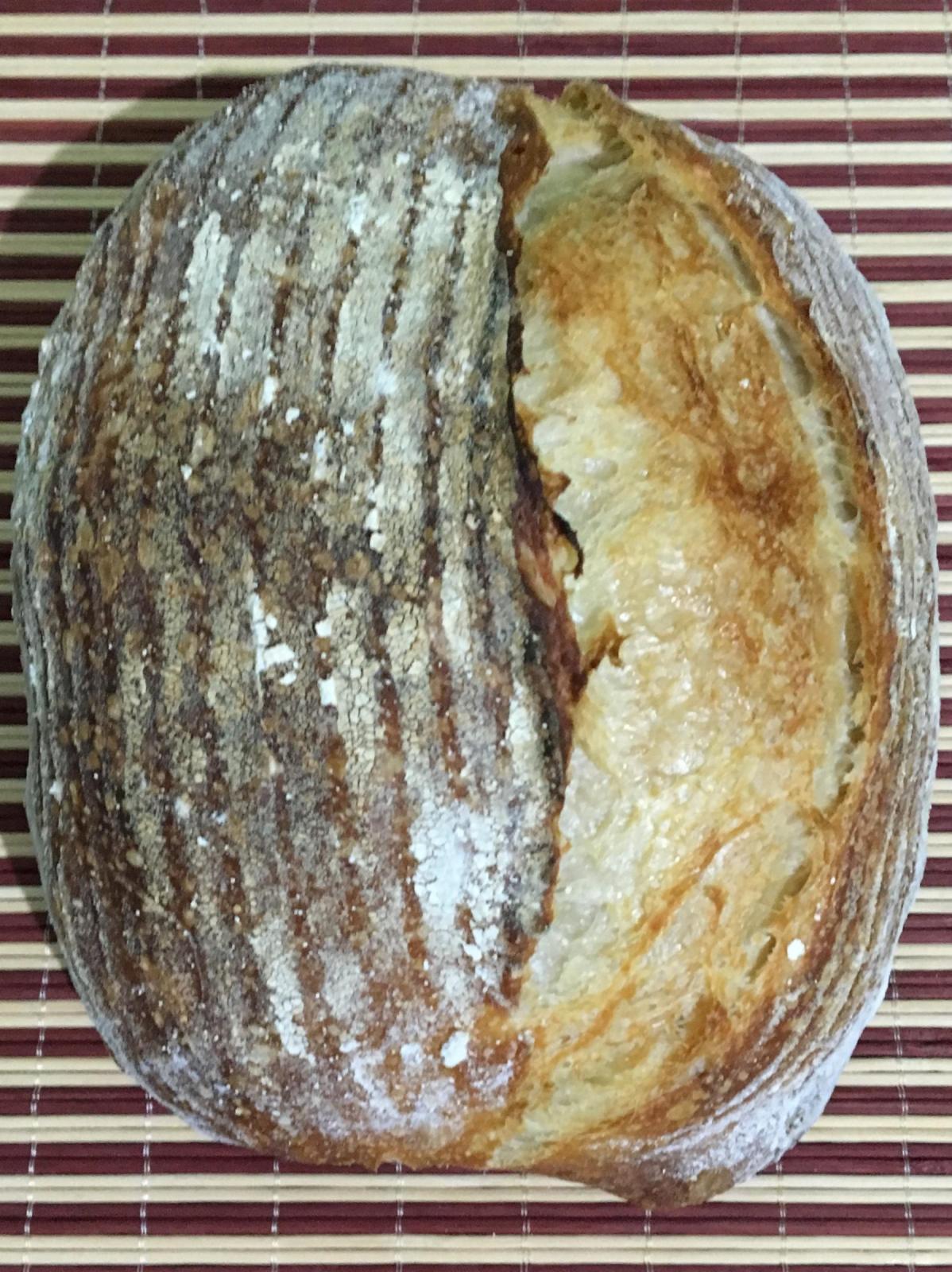We had a holiday last Friday, so a longer weekend, I've never made so many breads! Still testing weak flours and also a new recipe with a little wholemeal flour. There were 6 breads, the picture above is only 5 because one had already given away to friends. There were 3 different methods, 2 loaves each, I'll explain each one briefly and put the results photos.
This weekend I tested a tip from Doc.dough in the other post, as he explained, I took an aluminum foil and kneaded it in a ball, opened it again and folded it in 4 layers, I placed it in the oven rack to protect the bottom of the pan . It worked very well! The bottom of my breads improved a lot. Thank you, Doc!
These breads were my usual recipe, 1000g dough, 100% white flour, 65.03% water, 2.19% salt, 18.58% levain (100% hydration). Final hydration, 68%. The two that are not 100% white flour are the same %, only 10% of the flour is whole. Temperature in my refrigerator was about 5 ° C and in my kitchen during the day ranged between 24-26 ° C.
The oven and the pan were preheated to 250º C, the breads baked for 20 minutes with the lid of the pan and another 25 minutes without cover and oven at 230º C. It is longer than I left before, was trying to get a darker crust, could have baked for even longer, the bottom held up very well and came out not burned on all the loaves.
The first loaves were made according to an idea that Doc.dough gave, the method I used that time was asking for 14 hours of refrigerator, so he wondered if it would really take all this time and what would happen if it was reduced to 4 hours.
Basically it was this.
- mix (flour, water and levain) - 30 min "autolyse".
- add salt and mix (rubaud).
- 4 stretch and fold every 30 min.
- after 2 and a half hours of the mix, put in refrigerator for 4 hours.
- remove, pre-shape, bench rest 20 min, shape.
- final proof at the counter was 4 hours for first dough and 4 hours for second, the second dough was an hour more in the refrigerator.
Bread 1 result (this opening, shape problem?):



Bread 2 result:


The next batch was the breads with a little whole wheat flour.
The method was as follows.
- mix (flour, water) - 30 min autolyse.
- add levain - 30 min rest
- add salt and mix (rubaud)
- stretch and fold every 30 min, 6 times.
- Rest 1 hour.
- pre-shape, bench rest 20 min, shape. It was 6 hours of bulk fermentation.
- 1 hour rest at the counter and then put in the refrigerator for 14 hours.
- I removed it straight from the refrigerator to bake. The second dough stayed for an extra hour in the refrigerator.
Bread 3 result (why did it open more on the top? shape problem?):


Bread 4 result:


The last batch were 100% white flour bread, same method from my last post.
- mix (flour, water and levain) - 30 min "autolyse"
- add salt and mix (rubaud)
- 4 stretch and fold every 30 min
- put in refrigerator for 14 hours, second dough was an hour more.
- remove, pre-shape, bench rest 20 min, shape
- in the final proof I had to improvise, I had to leave for a lunch, then the dough that was the longest outside the refrigerator and was well developed, I put back in the refrigerator, the second I decided to leave on the counter and bake first when I returned, it was a total of 5 hours at the counter until baking. The one that went back to the refrigerator was 3 hours off, another 4 hours in the refrigerator and straight into the oven.
Bread 5 result (stayed on the counter directly):


Bread 6 result (returned to the refrigerator):


It was very difficult to fit so many loaves into my holiday and weekend schedule, but I succeeded and was very happy with the results. The first batch was very dense, so I think actually the 14 hours in the refrigerator make a lot of difference, at least when I use weak flour. The other breads were very good and especially the 6th bread I found it was even better than the others.
Sorry for the long post. I hope it did not get too confused.
;)